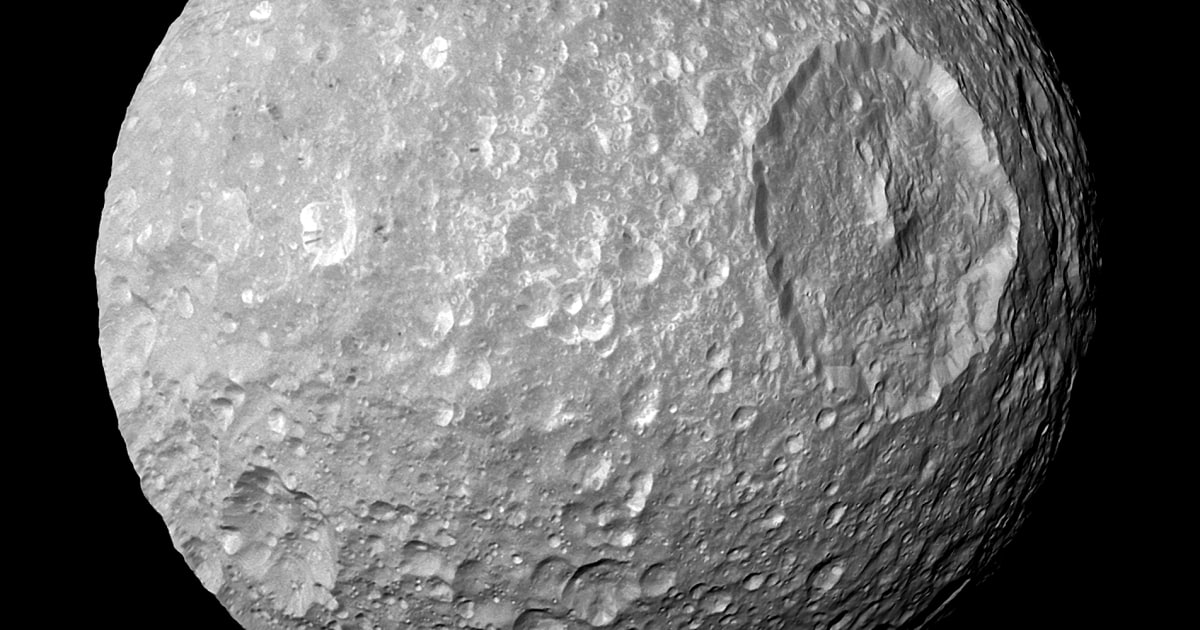By Marcia Dunn—
The Associated Press
A team of astronomers has discovered the best evidence yet for the existence of a vast, young ocean
under the icy surface of a moon of Saturn similar to the Death Star from the movie
Star Wars
.
The scientific team, led by French astronomers, analyzed changes in the orbit and rotation of the moon Mimas and reported Wednesday that an ocean hidden 12 to 18 miles (20 to 30 kilometers) beneath the icy crust was most likely an elongated rocky core.
The scientists based their findings on observations from NASA's Cassini spacecraft, which studied Saturn and its more than 140 moons for more than a decade before plunging into the ringed planet's atmosphere in 2017 and burning up.
The results were published in the journal Nature.
2010 NASA image shows the moon Mimas and its large Herschel crater, captured by the Cassini spacecraft.
AP
About 250 miles (400 kilometers) in diameter, the cratered moon lacks the fractures and geysers—typical signs of subsurface activity—of Saturn's moons Enceladus and Jupiter's Europa.
“Mimas was perhaps the most unlikely place to look for a global ocean, and liquid water in general,” co-author Valery Lainey of the Paris Observatory explained in an email.
“So it looks like a potentially habitable world, but no one knows how long it takes for life to emerge,” he said.
Astronomers believe the ocean takes up half the volume of Mimas, according to Lainey.
But it only represents between 1.2% and 1.4% of Earth's oceans, given the small size of the moon.
Discovered in 1789 by English astronomer William Herschel, Mimas owes its name to a giant in Greek mythology.
Despite its small size, Mimas has the second largest impact crater of all the moons in the solar system, which is why it is compared to the fictional
Star Wars
space station .
“The idea that relatively small, icy moons could host young oceans is inspiring,” Matija Cuk of the SETI Institute and Alyssa Rose Rhoden of the Southwest Research Institute wrote in an accompanying editorial.
They did not participate in the study.
According to Lainey, this underground ocean, which is believed to be between 5 and 15 million years old, that is, too young to be the lunar surface, would have an overall temperature close to the freezing point.
But deep down the water temperature
could be much warmer.
Co-author Nick Cooper of Queen Mary University of London said the existence of an “extraordinarily young” liquid water ocean makes Mimas an ideal candidate for studying the origin of life.

